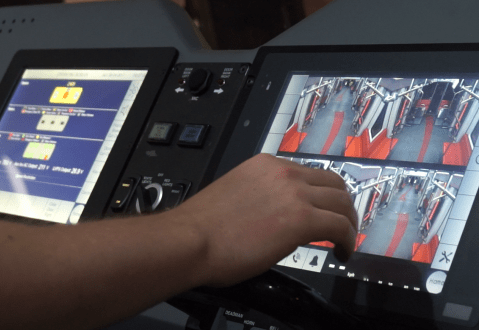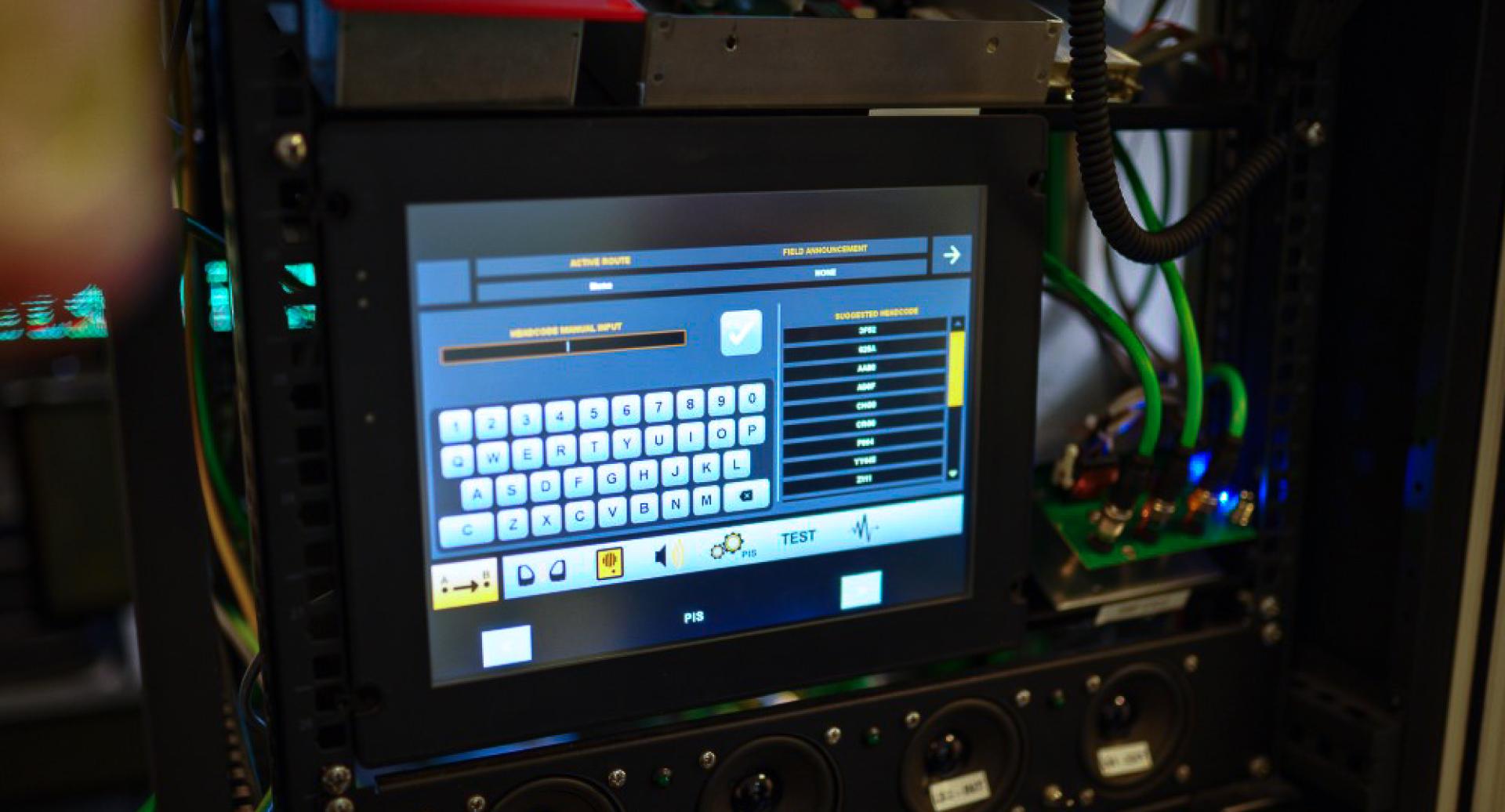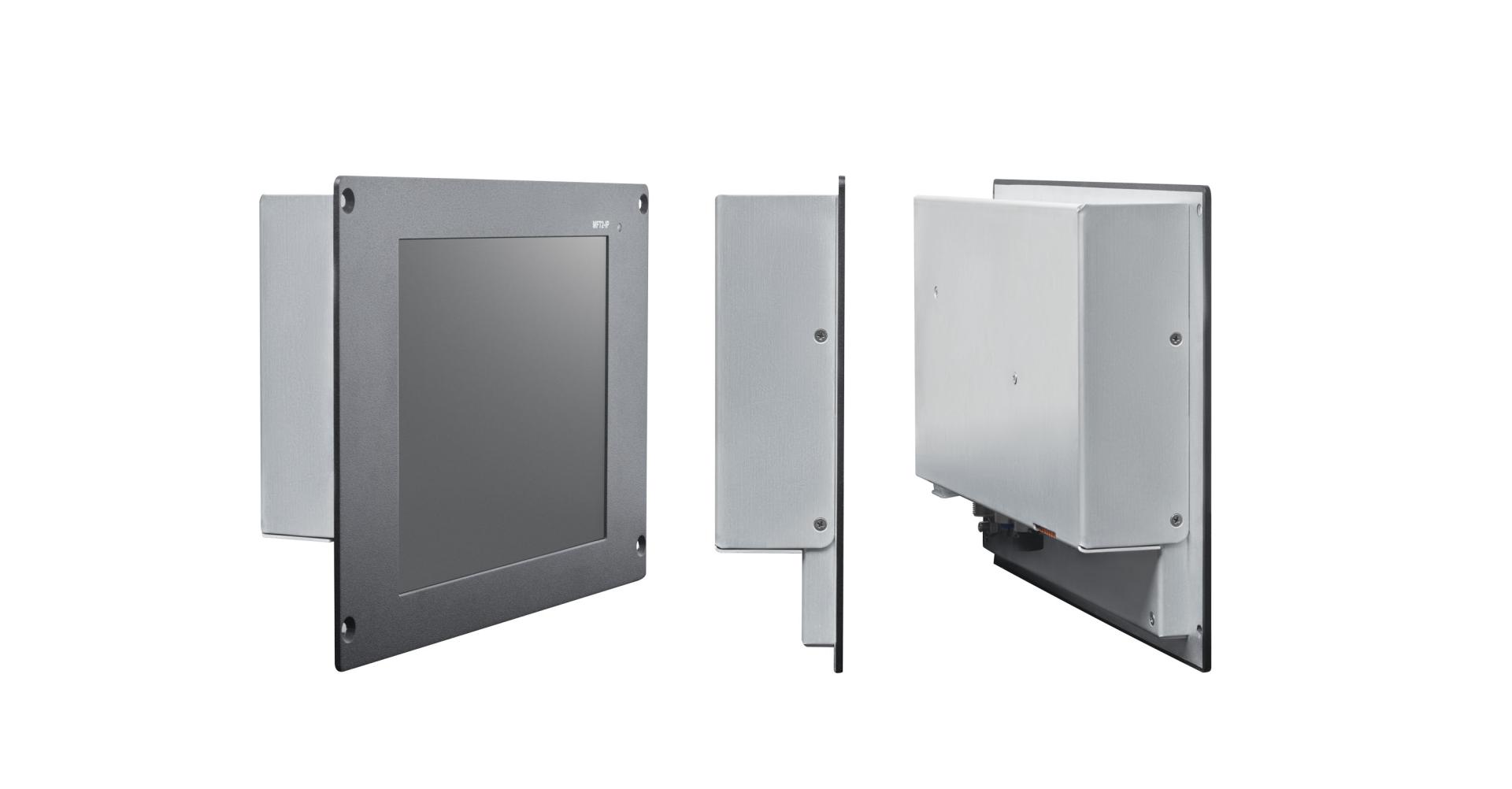
Human Machine Interface
Having an intuitive and proper Human Machine Interface (HMI) is essential for the users to get insights and manage their systems efficiently. Its importance relies on the benefits of better diagnostics and monitoring. Therefore, HMI should be on the priority list of Operating companies.
Full control via local or remote interfaces
The Human Machine Interface (HMI) is a touchscreen mounted in the cab or other staff areas. It controls and monitors your on-board systems. The Multifunction Terminal is a fully graphical, touch-sensitive control unit.
Among diagnostics, the vehicle driver uses it to operate the Passenger Information System, the Digital Video Surveillance System, the Passenger Intercom System and to select the output or fade-out locations for vehicles for the Public Address System.
The HMI can be installed in all kinds of rail vehicles (from tram to high-speed) and buses.

Human Machine Interface benefits
1. Improved visualization
All on-board systems in one dashboard.
2. More efficiency
Helps to identify areas of improvement within the operations.
3. Reduced downtime
Being able to get real-time notifications when there is an issue, helps to better manage such situations.
4. User friendly
Easy to understand Graphic user interface (GUI) and look-and-feel.
5. Straightforward
Straightforward control service functions for quick commissioning and repairs.
6. Great design
Fully graphical multitouch display.

Human Machine Interface FEATURES
- Management of journeys.
- Playback and visualization of pre-recorded messages.
- Intercom calls: Start and answer.
- Display of live footage from the on-board surveillance system.
- Display of external camera video content for platform handling.
- Display of the degree of passenger occupation in the train.
- Seat-reservation system control.
- System status’ overview for maintenance purposes.
- Local or remote interfaces available.
- Trigger service and commissioning features, like display and acoustic tests.
- Mobile app available for onboard staff.




